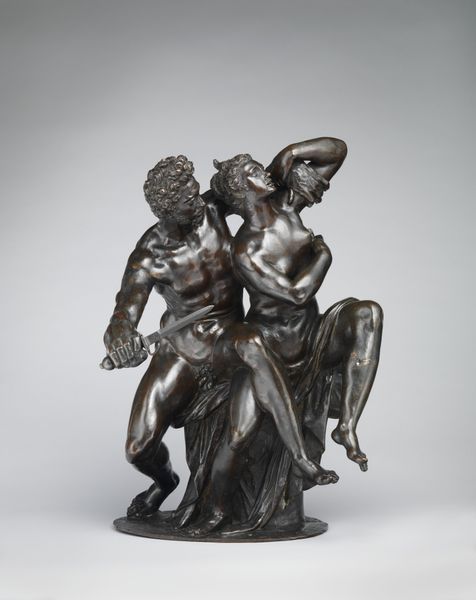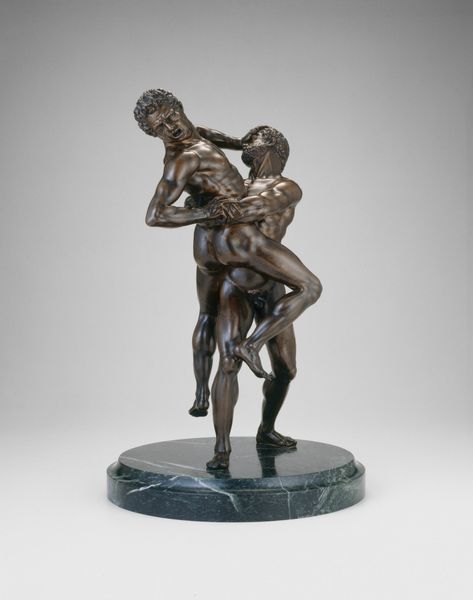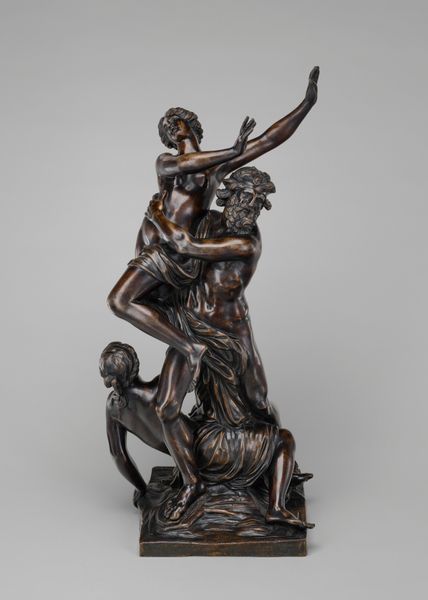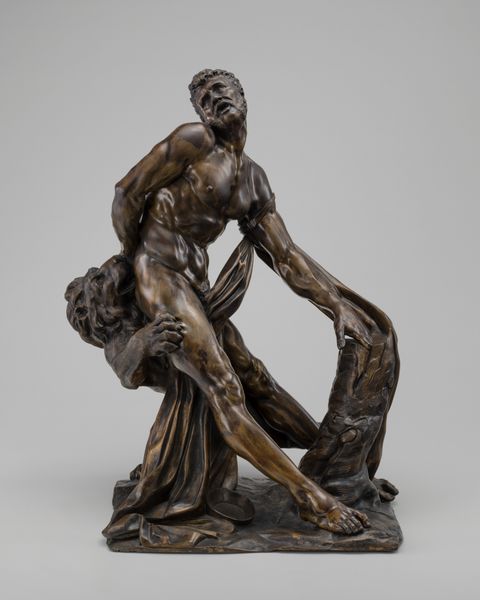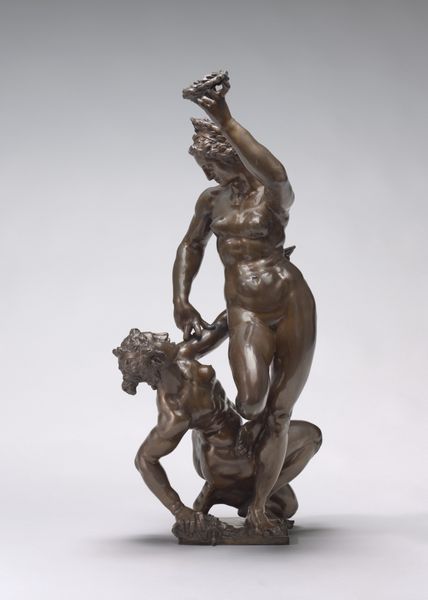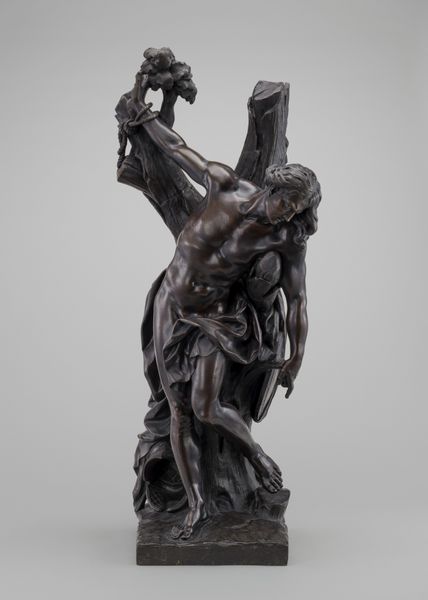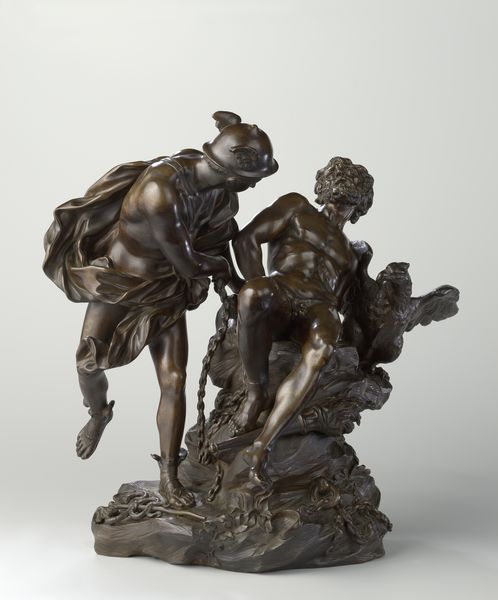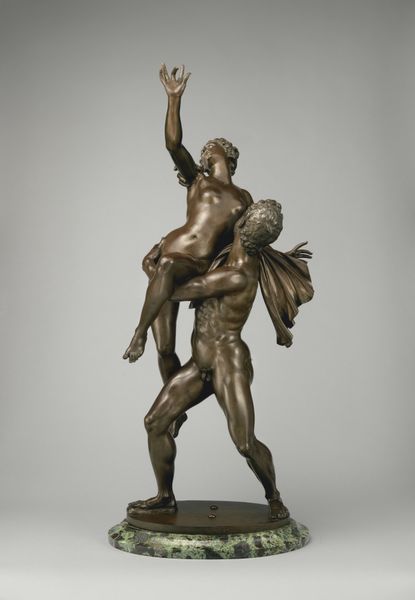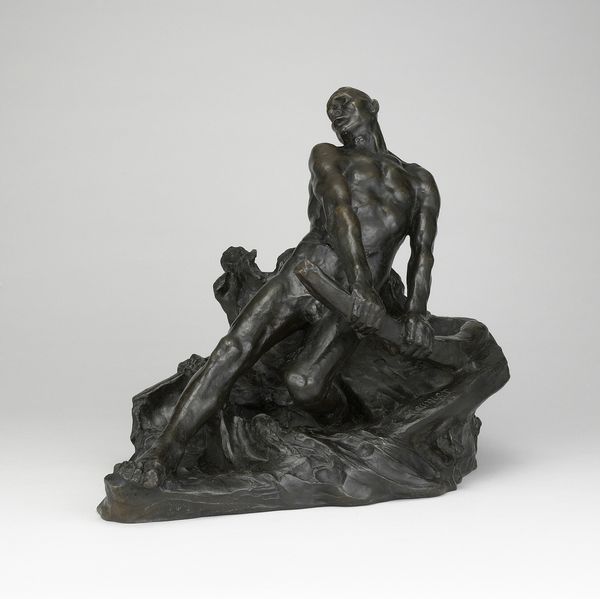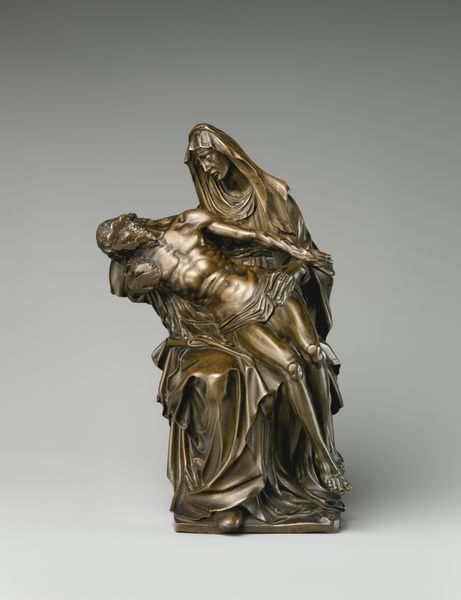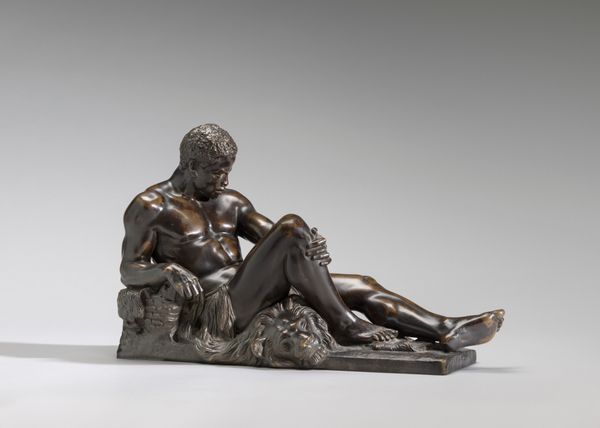
bronze, sculpture
#
statue
#
baroque
#
sculpture
#
bronze
#
figuration
#
sculpture
#
history-painting
#
nude
#
statue
Dimensions: 37.9 × 39.9 cm (14 7/8 × 15 11/16 in.)
Copyright: Public Domain
Editor: We’re looking at "Bireno and Olimpia," a bronze sculpture by Ferdinando Tacca, created sometime between 1640 and 1650. The woman's pose, languid and draped across the chaise, is striking compared to the upright man, who seems to be gazing upon her with compassion. What do you see when you look at this piece? Curator: What I observe first is the dynamic interplay between the vertical and horizontal forms. The male figure establishes a clear vertical thrust, a point of stability, which is then immediately complicated and countered by the reclining female figure and her setting. The artist seems less interested in portraying an historical scene, and more involved with juxtaposing forms and textures. Consider the contrast between the smooth skin of the figures and the textured drapery. Editor: It almost feels staged, this tension. So it's less about the story it depicts, and more about how it depicts form? Curator: Precisely. Observe how Tacca utilizes the bronze medium to create varied surfaces: the highly polished skin reflecting light versus the matte finish of the leaves and fabric, each texture contributing to a certain sensory experience. Furthermore, the composition leads the eye in a deliberate path. From the man's head down to his feet, then along the chaise lounge supporting the woman. This rhythmic flow serves to activate the space around the figures and enhance the overall aesthetic impact. What are your thoughts on that directionality? Editor: It’s definitely there! The forms are also reflected in the curved shape of the platform on which she is reclining and the drape that falls over the man's shoulder. The mirroring effects are quite visually pleasing and, you're right, lead the eye. It seems less focused on conveying narrative and more concerned with this contrast of textures. Curator: Yes. By focusing on the formal elements – the shape, texture, composition – we can decode the sculpture without reference to external narratives. Editor: That's a really insightful perspective. I usually jump to thinking about the history, but I can now see a new approach for interpreting a sculpture. Curator: Exactly, it provides new ways of analyzing forms and lines and overall sensory experience beyond conventional historical interpretations.
Comments
No comments
Be the first to comment and join the conversation on the ultimate creative platform.

